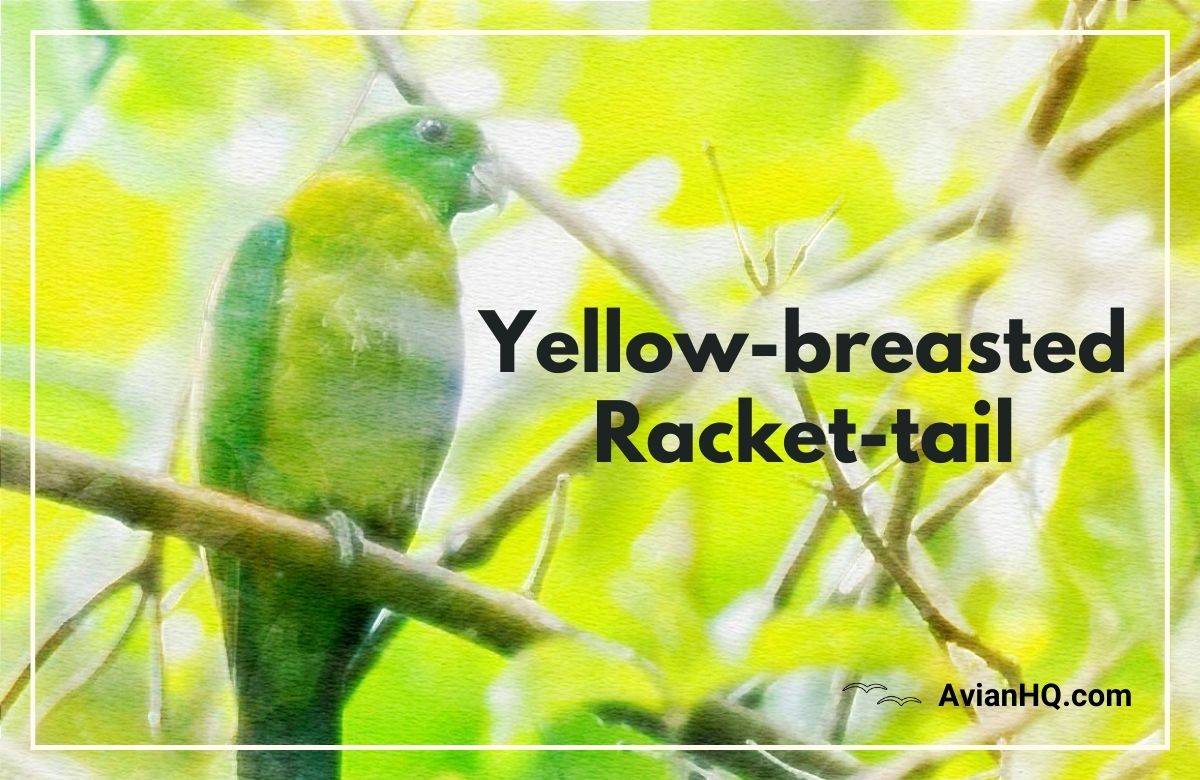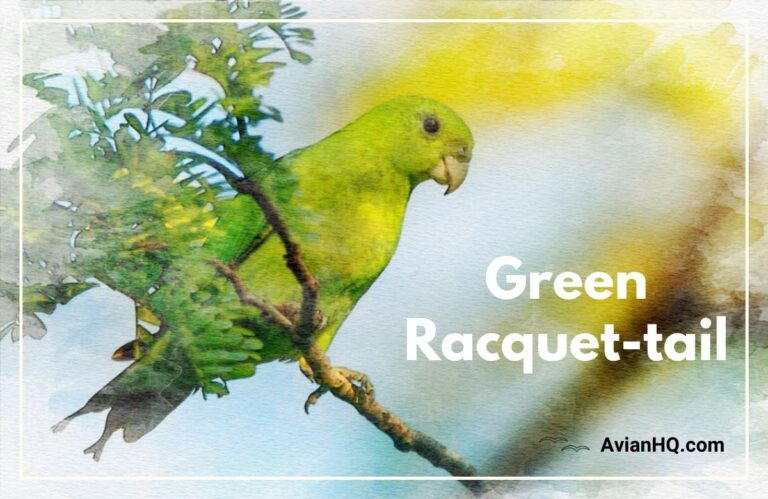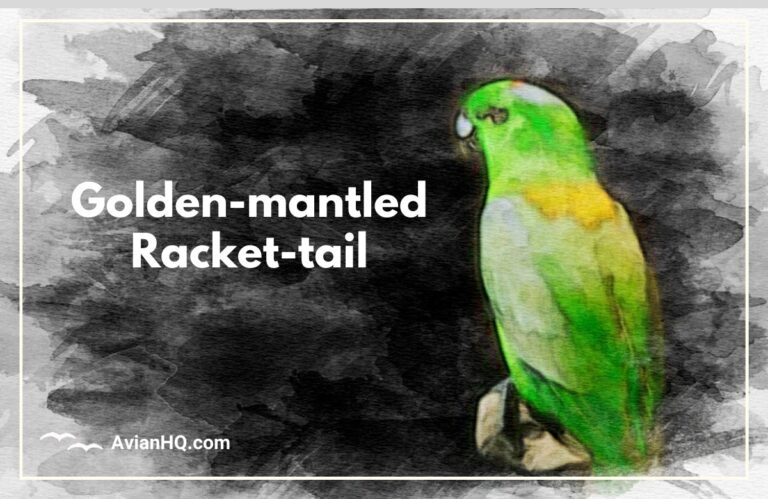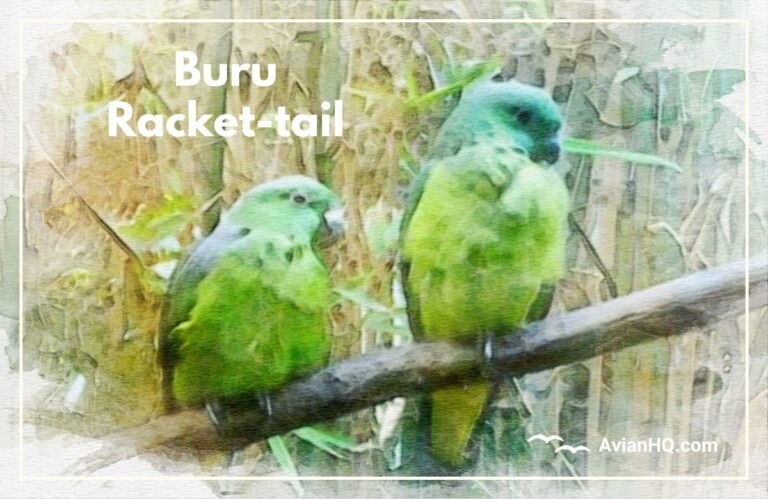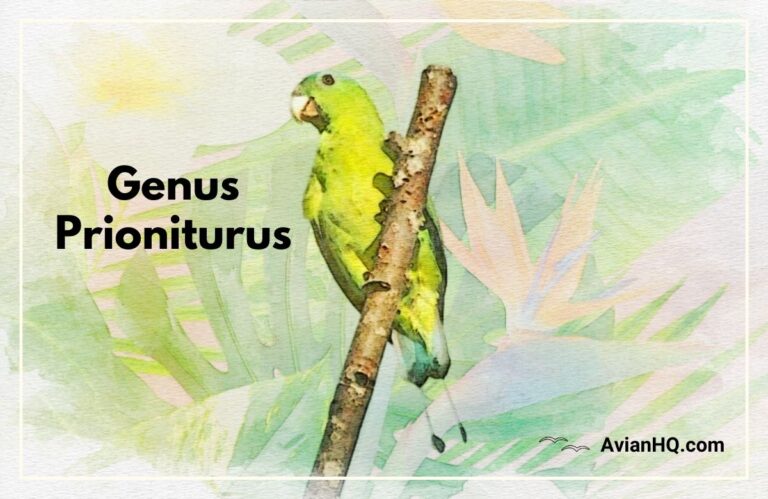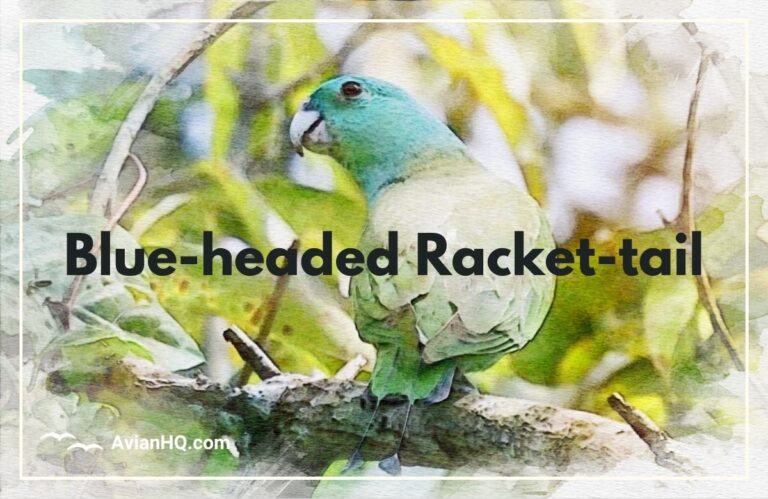Yellow-breasted Racket-tail Parrot (Prioniturus flavicans)
You gaze up into the canopy of the lush tropical forest, scanning the branches until you spot it – the bright plumage of the Yellow-breasted Racket-tail Parrot, endemic to northern Sulawesi, Indonesia. With it’s vivid colors and unique racket-shaped tail feathers, this rare parrot has captivated bird enthusiasts for years.
While relatively little is known about some aspects of it’s natural history, one thing is clear – the Yellow-breasted Racket-tail is a jewel among parrots, one in need of continued protection to ensure it’s survival. This comprehensive guide will provide an in-depth look at this magnificent bird.
“The Yellow-breasted Racket-tail Parrot is a true avian wonder.”
Let’s dive in and explore what makes this parrot so special!
Physical Appearance
The Yellow-breasted Racket-tail Parrot is a medium-sized parrot, measuring approximately 14-15 inches (35-37 cm) in length. Some key features of it’s plumage include:
Size
- Total length: 14-15 inches (35-37 cm)
- Wingspan: 7-8 inches (18-20 cm)
- Weight: 3.5-5 oz (100-140 g)
Coloration
- Males: Bright blue crown and nape, with a distinctive red spot in center of crown. Yellowish-green mantle feathers. Green wings and back. Yellow breast and neck blending into green underparts. Tail feathers green with black “rackets.”
- Females: Less blue on crown, no red spot. More greenish yellow on mantle and underparts. Shorter tail rackets.
- Juveniles: Similar to females but with little to no blue on crown. No tail rackets.
This parrot’s vibrant plumage helps it blend into the rainforest canopy. The striking coloration differs between the sexes and develops as the birds mature.
Distinguishing Features
- Blue crown and nape
- Bright red spot on crown
- Green wings with yellowish-green mantle
- Racket-shaped tail feathers
The combination of colors and unique tail shape make the Yellow-breasted Racket-tail instantly recognizable. No other Indonesian parrot looks quite like this!
Habitat and Distribution
The Yellow-breasted Racket-tail Parrot occupies a fairly small geographic range, restricted to certain islands in Indonesia.
Geographic Range
This species is endemic to northern Sulawesi, Indonesia and nearby smaller islands including:
- Bangka Island
- Lembeh Island
- Togian Islands
- Possibly Banggai Islands
It’s range extends from the northern peninsula of Sulawesi south to around 1°30′N latitude.
Preferred Habitat
The Yellow-breasted Racket-tail inhabits:
- Lowland primary rainforests up to 3,300 ft (1,000 m) elevation
- Hill forests up to 6,200 ft (1,900 m) elevation
- Remnant trees in cultivated areas
It spends most of it’s time high in the forest canopy, hidden among the leaves and branches. This habitat provides food and shelter for the parrot.
Due to extensive deforestation in Sulawesi, it’s specialized habitat is declining. Protection of remaining old-growth forest is crucial for this species’ survival.
Diet and Feeding
The Yellow-breasted Racket-tail Parrot is primarily frugivorous, feeding on various fruits, seeds, and nuts.
Foods Eaten
It’s natural diet consists of:
- Fruits like figs, mangoes, and citrus
- Berries
- Tree seeds
- Nuts
- Some leafy matter, buds, and blossoms
This provides the parrot with carbohydrates, protein, fat, and essential vitamins and minerals.
Foraging Behaviors
The parrot uses it’s curved bill to open hard fruits and crack tough nuts and seeds. Some key foraging behaviors include:
- Feeding slowly and deliberately through tree branches
- Climbing along limbs and creeping along vines
- Plucking fruits directly from trees
- Gathering fallen nuts on forest floor
- Flocking with other frugivorous birds
- Visit mineral licks for essential nutrients
The parrot’s strong legs and feet allow it to climb vertically up trunks and hang upside down while feeding. It uses it’s bill like a pair of forceps to extract food.
Breeding and Reproduction
Many details of the Yellow-breasted Racket-tail Parrot’s breeding habits remain unknown. However, some key points have been observed:
Breeding Season
- Likely breeds during the rainy season from November to April
- Courting activities observed February to April
- Coincides with peak fruiting period
Courtship and Mating
- Form monogamous pairs during breeding season
- Courtship displays include preening, bill rubbing, and feeding mate
- Nest in tree cavity, with female sealed inside during egg-laying
Nesting
- Use natural tree hollows or old woodpecker nest cavities
- Line nest with wood chips and debris
- Nest height around 16-65 ft (5-20 m) above ground
Clutch Size
- Typical clutch is 2-4 white eggs
- Female incubates eggs
- Incubation period about 26 days
Incubation and Fledging
- Eggs hatch asynchronously over several days
- Chicks are altricial at hatching
- Fledging occurs at 8-9 weeks old
More research is needed on this species’ breeding habits and early life stages.
Conservation
Due to ongoing threats to it’s specialized habitat, the Yellow-breasted Racket-tail Parrot is classified as Near Threatened on the IUCN Red List.
Major Threats
- Deforestation for logging, mining, agriculture
- Forest fires
- Collection for the pet trade
- Volcanic eruptions near range
It is estimated up to 40% of lowland forest on Sulawesi has been lost, removing crucial habitat for this parrot.
Population Trends
- Current global population unknown but likely under 50,000
- Estimated to be decreasing at a moderately rapid rate
- Declines up to 30% over the past three generations
Protection Efforts
- Listed under CITES Appendix II, limiting trade
- Occurs in some protected areas like Dumoga-Bone National Park
- Further research needed on population size and trends
- Increased enforcement against poaching and habitat loss
Protecting remaining lowland rainforest habitat will be key to the survival of the Yellow-breasted Racket-tail Parrot. Raising local community awareness and promoting ecotourism may also help provide incentives for conservation.
Conclusion
The Yellow-breasted Racket-tail Parrot is an endemic Indonesian species with unique and vivid plumage. This medium-sized parrot inhabits lowland rainforests in northern Sulawesi, where it feeds on fruits, seeds, and nuts.
Key identifying features include it’s bright blue crown, red spot on the head, green and yellow body feathers, and distinctive racket-shaped tail. The breeding biology of this elusive canopy-dweller remains poorly understood.
Due to extensive deforestation across it’s limited range, the Yellow-breasted Racket-tail is classified as Near Threatened. Up to 40% of it’s lowland forest habitat has been lost. Ongoing threats from logging, agriculture, and the pet trade continue to put pressure on remaining populations.
Increased research and strengthened legal protections are needed to safeguard this rare parrot. Expanding the protected area network, limiting deforestation, and controlling the illegal pet trade are crucial conservation actions. Ecotourism initiatives may also aid habitat protection efforts.
The Yellow-breasted Racket-tail Parrot is a true jewel of Indonesia’s forests, one that encapsulates the country’s unique biodiversity. Ensuring the future of this vivid species will require active stewardship of Sulawesi’s remaining wild places. With commitment and care, this rare parrot can continue to brighten the rainforest canopy for generations to come.

